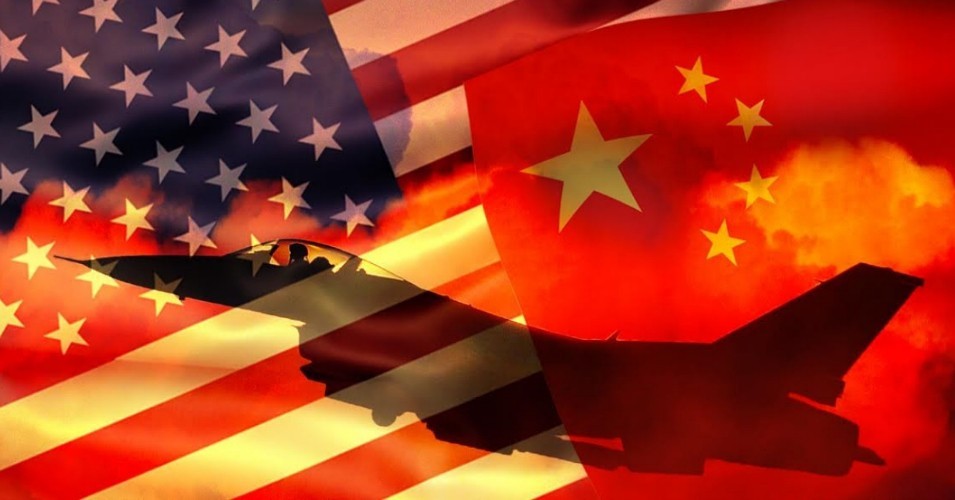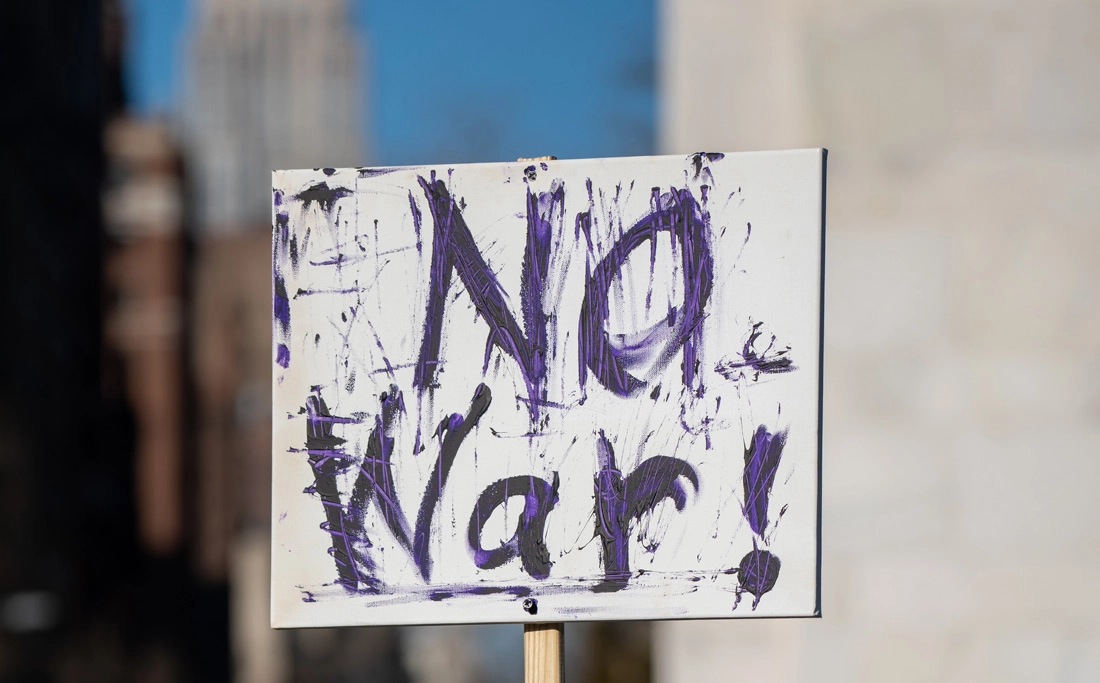Biden Dangerously Accelerating the New Cold War with China
Despite our differences with China—some of them profound—we
would do well to prioritize pursuing mutually beneficial diplomacy and
building collaborations to address the existential threats to survival
over preparing for catastrophic war with the Middle Kingdom.
by Joseph Gerson

The bloom is off the rose. While there is much in Joe Biden’s and the Democratic Party’s domestic policy agenda to be admired and supported, rooting it in Trump initiated anti-China hysteria undercuts our national security. Even if it turns out that Covid 19 escaped from a Chinese laboratory studying viruses in bats, the lesson to be taken should be that more, not less, cooperation is needed to increase the safety of their labs and our own security. Instead of increasing the Pentagon’s budget and military confrontations over Taiwan and the South China Sea that risk triggering catastrophic war by accident or miscalculation, Biden and company should be pursuing Common Security with China. As we learned at the dangerous height of the last Cold War, real security can only be achieved through mutuality with a nation’s rival, not via spiraling arms races but through mutually beneficial diplomacy like that which led to the INF Treaty with the Soviets.
Instead of increasing military spending to reinforce U.S. dominance over distant seas or to retain corrupt authoritarian clients in countries like the Philippines and India, that money should be spent to export billions of vaccine shots to countries in need before new variants renew the pandemic here in the United States. With our housing shortage, real security lies in funding massive home construction. And, with the seas rising and a new fire season upon us, cooperation—not war—with China is essential if the climate emergency is to be contained.
Beginning with Bill Clinton, we have witnessed a pattern of Democratic presidents being excessively confrontational in their policies and actions toward China, followed by being sobered by the dangers and failures of those policies.
Yet, with its stated goals of being “tough” with China and “shap[ing] the contours of China’s rise”, the Biden Administration’s provocative military operations and rhetoric undermine our own security. Supporting the Pandemic Olympics this summer in Tokyo, while requiring a boycott of the 2022 winter Olympics in China, as Senator Schumer’s US Innovation and Strategic Competition legislation opportunistically does, poisons the well that we share with China and the world. Yes, challenge China on its human rights violations, but do so in tandem with opposing police violence and the prison-industrial complex in the U.S. Alienating a formerly humiliated nation now on the rise, with whom we share real security needs, is foolhardy risk taking.
Even as we support Biden’s domestic agenda, ignoring his aggressive Indo-Pacific initiatives and actions is self-defeating. Since assuming power, the Biden Administration has:
- Accelerated the pace of provocative naval and Air Force “freedom of navigation” operations near Chinese islet military bases in contested South China Sea waters.
- Dispatched warships to transit the Taiwan Strait and broadcast its “rock solid” commitment to Taiwan and its military commitment to ensuring Japanese control over the uninhabited Senkaku/Islands also claimed by China.
- Poisoned the rhetorical well in the run up to the quasi-summit meeting in Anchorage, including the claim of Chinese genocide in Xinjiang province, while embracing Israel and other grotesque human rights violators.
- Reinforced its regional alliances to surround and contain China with Secretaries of State and Defense Blinken and Austin making their first trips abroad to Japan and South Korea and hosting the first meeting of the QUAD, the incipient U.S., Japan, Australia, and India NATO-like alliance.
- Welcomed Japanese Prime Minister Suga and President Moon of South Korea as the first heads of state invited to Washington, D.C.to reinforce its Indo-Pacific China containment alliance structure.
- Invited Taiwan’s functional ambassador to the inauguration, testing the limits of the One China policy, the foundation for U.S.-China relations since 1979.
- Celebrated NATO’s increasing Indo-Pacific commitments.
- Released its proposed Pentagon budget which calls for another massive increase in military spending, much of it designated to reinforce U.S. Indo-Pacific hegemony.
Although a number of Biden’s foreign and military policies initiatives are to be commended, his China/Indo-Pacific policies and provocations are extensions of the Obama era pivot and the Trump Administration’s 2018 National Security Guidance. Recall that the public courtship of India as an anti-China U.S. ally began in 2009 when Obama welcomed India’s India’s Prime Minister as the first head of state to be honored with a state visit.
Two years later, Secretary of State Hillary announced and provided the rationale for the pivot, because the region is host to “many of the key engines of the global economy” and emerging powers, has half the world’s population, the site of the seminally important Pacific and Indian Ocean shipping lanes, home to “key” U.S. allies, as well as the leading emitters of climate change gasses.
The Pentagon then committed to deploy 60% of U.S. naval and air power to the region. Obama reinforced the United States “hub and spokes” Asia-Pacific alliance systems and deepened engagements with regional institutions like ASEAN and APEC. It also led negotiation for the Transpacific Partnership (TPP) trade agreement to dictate the 21st century’s economic rules of the road for the 21st century in order to more deeply integrate non-Chinese Asia-Pacific societies with the U.S.
Although Donald Trump weakened the U.S. Asia-Pacific alliance structure with his “American First” disregard for allies and ignored regional multilateral institutions, containing, marginalizing, and scapegoating China constituted his administration’s foreign policy priority. The 2018 National Defense Strategy defined China as the United States’ “peer competitor”, necessitating reduction of U.S. foreign military and foreign policy commitments from Europe and the War on Terror to prepare for great power war. With his nationally self-defeating trade war, Trump imposed massive tariffs on Chinese goods and deflected attention from his staggering Covid-19 pandemic failures with racist rhetoric that China was responsible for the “Kungflu.”
After beginning his reign with the first U.S. presidential phone call to a Taiwanese president since 1979 and sending a high-level diplomat to Taipei for the first time in 40 years, Trump closed it with more than $3 billion in arms sales and sending high level officials to Taipei. All were designed to chip away at the one China policy and to tie the U.S more deeply to the island nation that Beijing perceives as a renegade province that must be reunified with China.
Biden foreign and military policy headlines have been dominated by Blinken, Sullivan and Austin. But the real driver of Biden China policy is Kurt Campbell, the Obama era Assistant Secretary of State for East Asian and Pacific Affairs who conceived the pivot, who is now the senior National Security Council Indo-
Pacific policymaker.
In 2016, Campbell wrote The Pivot: The Future of American Statecraft in Asia. There he outlined a U.S. Strategy for Asia. It provides the template for the Biden-Blinken-Austin Indo-Pacific agenda. Its elements include:
- Clarifying the need for and components of the pivot, and “mobiliz[ing]” the U.S. public behind it “through clear and authoritative declarations of U.S. Asia Strategy”. Hence the drumbeat of Biden’s and his mandarins’ warnings about the China “threat”.
- “[S]trengthening ties to our Asian allies, including Japan, South Korea, Australia, the Philippines, Thailand, and Singapore (a quasi ally).”
- Increase ties with India, Taiwan, New Zealand, Vietnam, Indonesia, Malaysia, and Pacific island states.
- “[S]hape the contours of China’s rise” by “embedding China policy within a larger Asia policy framework…[adopting} a strategy that focuses inordinately on communiques and grand bargains and regards China …” Recognizing that relations with China will be a “mixture of competition by
sustaining the US. dominated Asian ‘operating systems’ while seeking
“common ground on crosscutting global issues.” - “[U]pdate and modernize” U.S. military capabilities in the region, including “increasing access and basing in Southeast Asia and the Indian Ocean.”
- Integrate the Asia-Pacific through expansion of free trade agreements and economic interaction. (Further into the Biden era, look for efforts to rejoin the TPP, now being led by Japan.)
- Engage more deeply in the regions “integrative international institutions” that have “the power to shape and shore up the [U.S. led] rules and norms in the region…”
- Support democracy in the region.
- “[T]he United States need not Pivot to Asia alone…European allies….have the potential to support and expand shared interests.” This explains NATO’s new 2030 Doctrine which include containing China and Britain’s and France’s recent naval deployments to the South China Sea.
Beginning with Bill Clinton, we have witnessed a pattern of Democratic presidents being excessively confrontational in their policies and actions toward China, followed by being sobered by the dangers and failures of those policies. Despite our differences with China—some of them profound—we would do well
to prioritize pursuing mutually beneficial diplomacy and building collaborations to address the existential threats to survival over preparing for catastrophic war with the Middle Kingdom.
Or, as Bertrand Russell and Albert Einstein advised at the height of the Cold War, we should be remembering our humanity, and forgetting the rest.

Joseph Gerson is President of the Campaign for Peace, Disarmament and Common
Security, Co-founder of the Committee for a SANE U.S. China Policy and Vice President of
the International Peace Bureau. His books include Empire and the Bomb, and With
Hiroshima Eyes.

